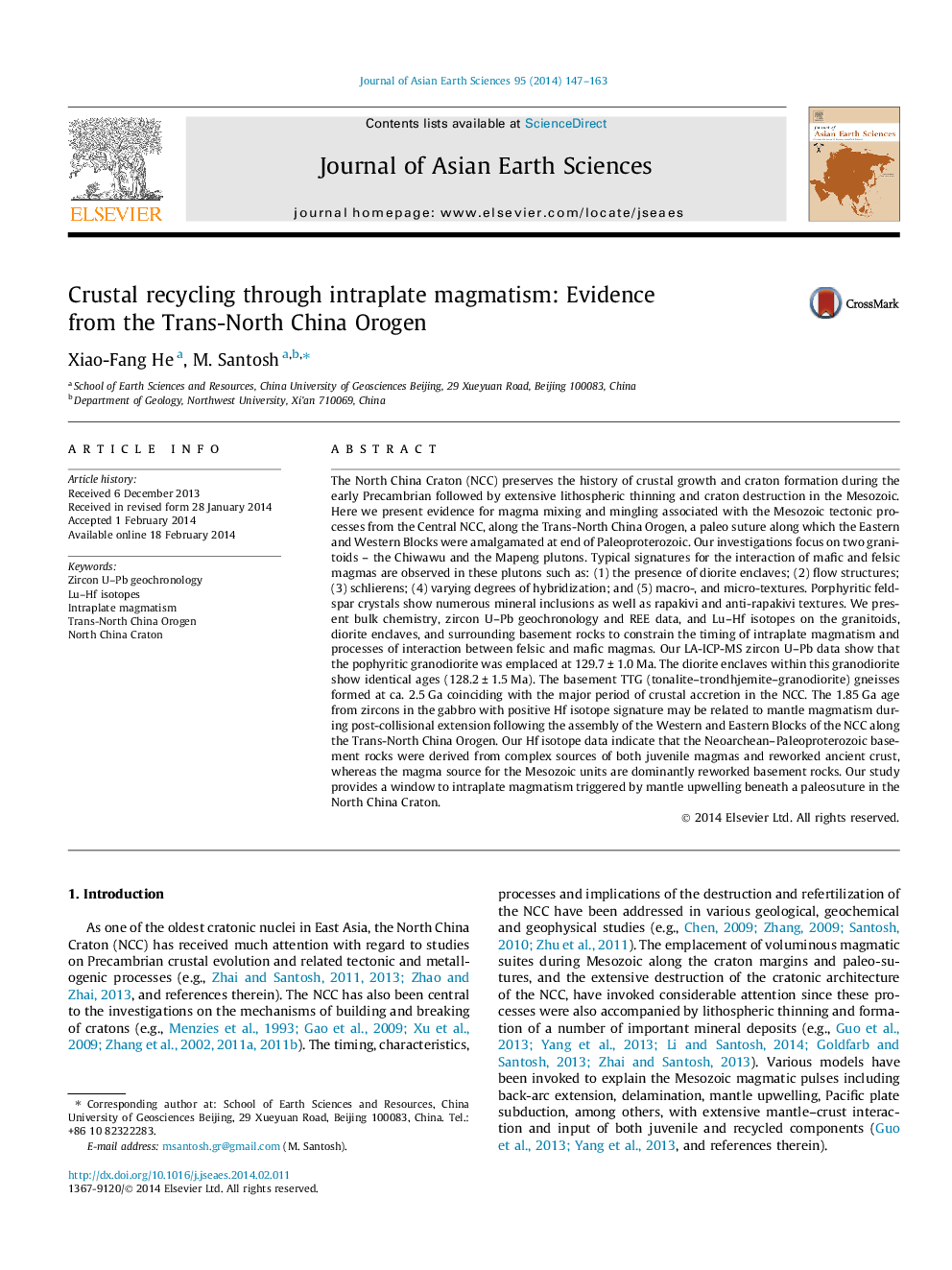| Article ID | Journal | Published Year | Pages | File Type |
|---|---|---|---|---|
| 4730626 | Journal of Asian Earth Sciences | 2014 | 17 Pages |
•The Chiwawu granodiorite was emplaced at ca. 130 Ma.•Disequilibrium textures suggest magma-mixing and mingling.•Basement rocks preserve subduction-related components in magma source.•Intraplate orogeny involved extensive crustal recycling.
The North China Craton (NCC) preserves the history of crustal growth and craton formation during the early Precambrian followed by extensive lithospheric thinning and craton destruction in the Mesozoic. Here we present evidence for magma mixing and mingling associated with the Mesozoic tectonic processes from the Central NCC, along the Trans-North China Orogen, a paleo suture along which the Eastern and Western Blocks were amalgamated at end of Paleoproterozoic. Our investigations focus on two granitoids – the Chiwawu and the Mapeng plutons. Typical signatures for the interaction of mafic and felsic magmas are observed in these plutons such as: (1) the presence of diorite enclaves; (2) flow structures; (3) schlierens; (4) varying degrees of hybridization; and (5) macro-, and micro-textures. Porphyritic feldspar crystals show numerous mineral inclusions as well as rapakivi and anti-rapakivi textures. We present bulk chemistry, zircon U–Pb geochronology and REE data, and Lu–Hf isotopes on the granitoids, diorite enclaves, and surrounding basement rocks to constrain the timing of intraplate magmatism and processes of interaction between felsic and mafic magmas. Our LA-ICP-MS zircon U–Pb data show that the pophyritic granodiorite was emplaced at 129.7 ± 1.0 Ma. The diorite enclaves within this granodiorite show identical ages (128.2 ± 1.5 Ma). The basement TTG (tonalite–trondhjemite–granodiorite) gneisses formed at ca. 2.5 Ga coinciding with the major period of crustal accretion in the NCC. The 1.85 Ga age from zircons in the gabbro with positive Hf isotope signature may be related to mantle magmatism during post-collisional extension following the assembly of the Western and Eastern Blocks of the NCC along the Trans-North China Orogen. Our Hf isotope data indicate that the Neoarchean–Paleoproterozoic basement rocks were derived from complex sources of both juvenile magmas and reworked ancient crust, whereas the magma source for the Mesozoic units are dominantly reworked basement rocks. Our study provides a window to intraplate magmatism triggered by mantle upwelling beneath a paleosuture in the North China Craton.
Graphical abstractFigure optionsDownload full-size imageDownload as PowerPoint slide
